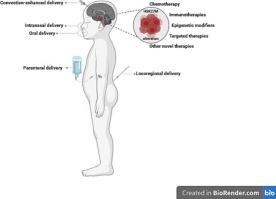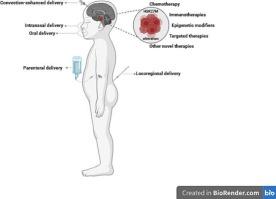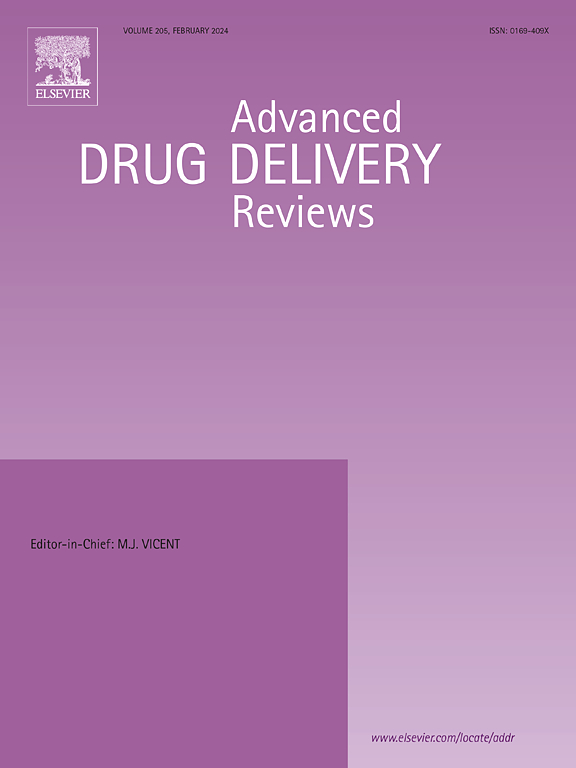Drug delivery strategies for paediatric diffuse midline gliomas
IF 17.6
1区 医学
Q1 PHARMACOLOGY & PHARMACY
引用次数: 0
Abstract
Diffuse midline gliomas (DMGs) are a highly aggressive and inoperable type of paediatric brain tumours, with a median survival of less than one year. Therapeutic progress has been hindered by the tumour’s anatomical location, its extensive molecular heterogeneity, and the restrictive nature of the blood brain barrier (BBB) in drug delivery. This article explores the current therapeutic landscape of DMG and evaluates emerging drug delivery strategies, including oral, intravenous and intrathecal administration, convection-enhanced delivery (CED), and intranasal approaches, designed to improve drug access to the brain. Advancements in these methods, combined with targeted therapies tailored to the tumour’s unique molecular features, represent a critical pathway towards improving clinical outcomes for DMG patients.


小儿弥漫性中线胶质瘤的药物递送策略
弥漫性中线胶质瘤(dmg)是一种高度侵袭性和不可手术的儿科脑肿瘤,中位生存期不到一年。由于肿瘤的解剖位置、其广泛的分子异质性以及血脑屏障(BBB)在药物输送中的限制性,治疗进展受到阻碍。本文探讨了DMG目前的治疗前景,并评估了新兴的药物给药策略,包括口服、静脉注射和鞘内给药、对流增强给药(CED)和鼻内给药,旨在改善药物进入大脑的途径。这些方法的进步,结合针对肿瘤独特分子特征的靶向治疗,代表了改善DMG患者临床结果的关键途径。
本文章由计算机程序翻译,如有差异,请以英文原文为准。
求助全文
约1分钟内获得全文
求助全文
来源期刊
CiteScore
28.10
自引率
5.00%
发文量
294
审稿时长
15.1 weeks
期刊介绍:
The aim of the Journal is to provide a forum for the critical analysis of advanced drug and gene delivery systems and their applications in human and veterinary medicine. The Journal has a broad scope, covering the key issues for effective drug and gene delivery, from administration to site-specific delivery.
In general, the Journal publishes review articles in a Theme Issue format. Each Theme Issue provides a comprehensive and critical examination of current and emerging research on the design and development of advanced drug and gene delivery systems and their application to experimental and clinical therapeutics. The goal is to illustrate the pivotal role of a multidisciplinary approach to modern drug delivery, encompassing the application of sound biological and physicochemical principles to the engineering of drug delivery systems to meet the therapeutic need at hand. Importantly the Editorial Team of ADDR asks that the authors effectively window the extensive volume of literature, pick the important contributions and explain their importance, produce a forward looking identification of the challenges facing the field and produce a Conclusions section with expert recommendations to address the issues.

 求助内容:
求助内容: 应助结果提醒方式:
应助结果提醒方式:


